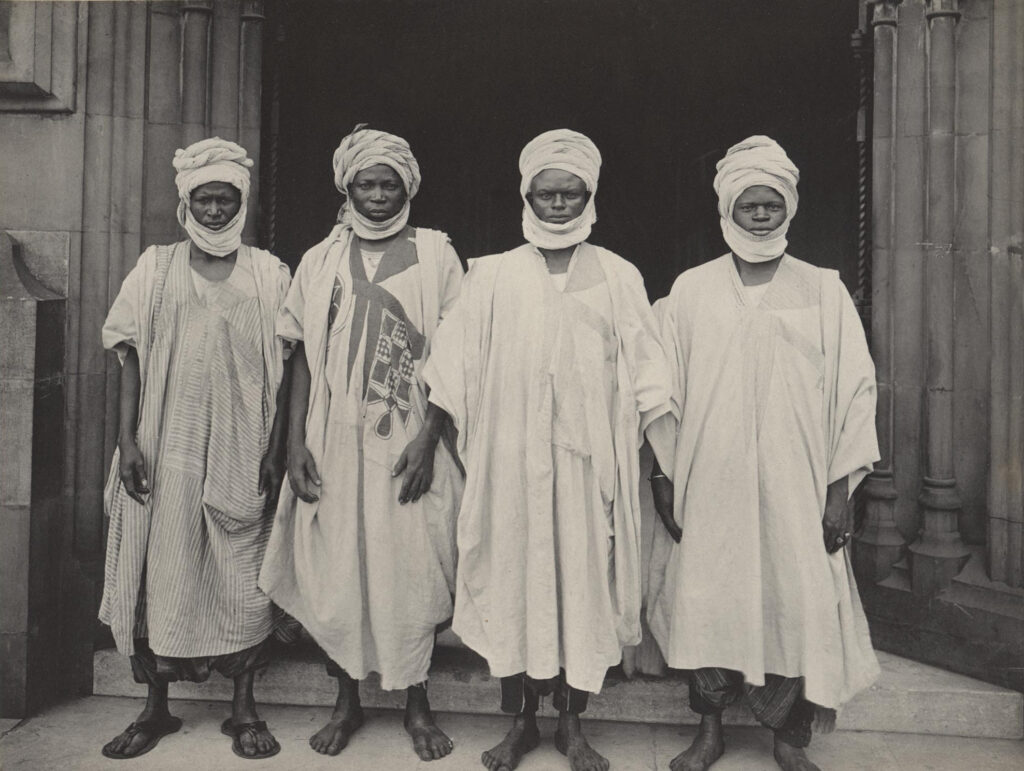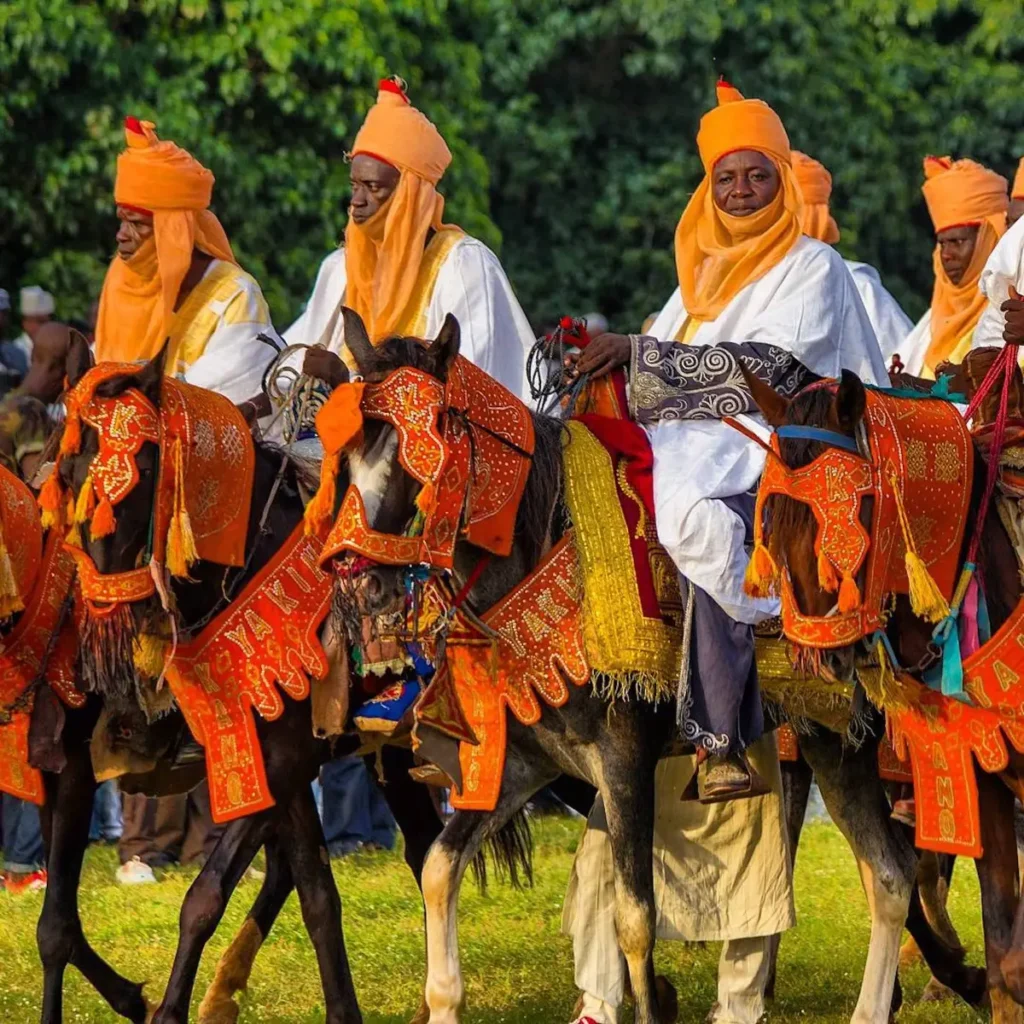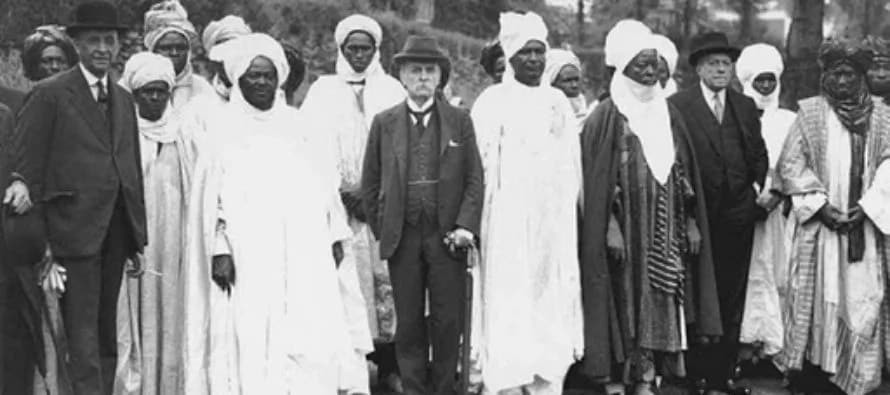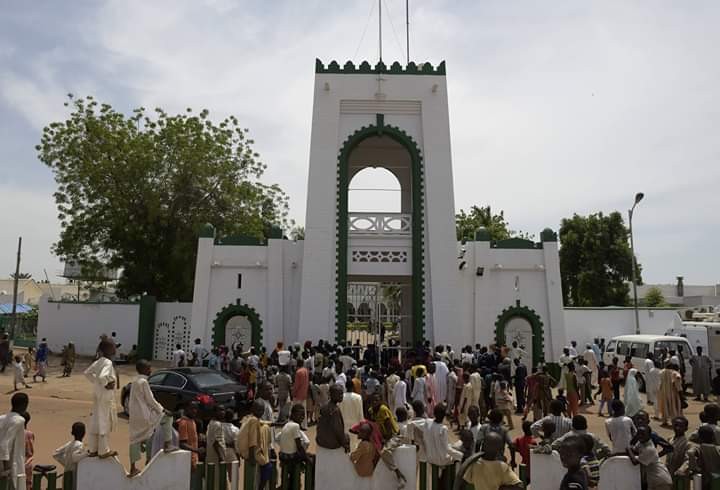Before the advent of colonialism, there was an administration of the Hausa/Fulani in the northern part of Nigeria, which had a structure of administrative activities with its headquarters in Sokoto, known as the Sokoto Caliphate. After the Jihad war led by Uthman Dan Fodio, he used his son and brother as heads of the administration in Sokoto and Guandu to manage the affairs and ensure that every citizen adhered to the rules that governed them.
Sokoto is the capital and largest city of Sokoto state in Nigeria’s northwest. It is located slightly east of the Sokoto (Kebbi) River’s confluence with the Rima River. The village is located about 50 miles (80 kilometres) south of the Niger border, on an ancient caravan route that runs northward into the Sahara.
In this piece, Naijabioraphy enunciates the history of the northern headquarters, which is the Sokoto Caliphate.

History
In West Africa, the Sokoto Caliphate was a Sunni Muslim caliphate. It was formed in 1804 by Usman Dan Fodio after Usman Dan Fodio defeated the Hausa Kingdoms in the Fulani War. The modern-day countries of Cameroon, Burkina Faso, Niger, and Nigeria were once part of the caliphate. When the British and Germans seized the region in 1903, they annexed it to the newly formed Northern Nigeria Protectorate and Kamerun, respectively.
With the agreement and assistance of the city’s Hausa leadership, Usman dan Fodio, an Islamic scholar and urbanized Fulani had been actively educating and preaching in the city of Gobir. When Yunfa, a former student of Dan Fodio, became Sultan of Gobir, he imposed restrictions on Dan Fodio’s activities, eventually pushing him into exile in Gudu. A large number of individuals left Gobir to join Dan Fodio, who began to recruit new supporters from different parts of the country. Sultan Yunfa declared war on Dan Fodio on February 21, 1804, after feeling threatened by his former tutor.
Sokoto was a small village when Usman dan Fodio, the first sarkin musulmi, that is “commander of the faithful”, chose it to be the military headquarters of the Fulani jihad, known as the holy war, between 1804 and 1805. When Usman divided the empire into two halves and proclaimed his son Muhammad Bello ruler of the eastern emirates, it became the permanent capital of the Fulani empire in 1809. Muhammad reigned from Sokoto, but it wasn’t until Usman moved there in 1814 and died there in 1817 that it became the Fulani people’s spiritual centre. The tomb of Usman and other holy monuments have turned the area into a pilgrimage hotspot.
In 1802, the Hausa King Yunfa attempted to murder Usman dan Fodio, resulting in the establishment of the Caliphate. In February 1804, Usman and his supporters fled to Gudu in order to avoid prosecution. Usman’s supporters declared him to be the Commander of the Faithful. The Sokoto Caliphate had conquered various Nigerian states by 1808. The state expanded to its fullest extent under the sixth caliph, Ahmadu Rufai, covering practically all of West Africa. The twelfth and final caliph, Attahiru, was assassinated by British forces in 1903, bringing the caliphate to an end.
Usman dan Fodio then created a number of flag bearers among those who followed him, becoming the empire’s first political system. Dan Fodio rallied mostly Fulani “warrior-scholars” against Gobir, declaring jihad against the Hausa kings. Despite early defeats at the Battle of Tsuntua and elsewhere, Dan Fodio’s soldiers began capturing key cities in 1805. The Fulani utilized guerrilla warfare to swing the struggle in their favour, gaining backing from civilians who had grown tired of the Hausa kings’ dictatorial authority and excessive taxes. Even non-Muslim Fulani began to rally behind Dan Fodio. Thousands of people died during the war, which lasted from 1804 until 1808.

The Success of the Sokoto Caliphate
The jihad has established “a new slavery frontier based on a revitalized Islam.” By 1900, the Sokoto state had “at least 1 million and maybe as many as 2.5 million slaves,” making it the second-largest modern slave society after the United States, which had 4 million in 1860. In the Sokoto polity, however, there was far less of a divide between slaves and their masters.
By the 1820s, Sokoto was famed for its two huge mosques, the Masallacin Shehu and the Masallacin Bello, which were both renovated in the 1960s, as well as the Sultan’s residence. It was known for its leather products, especially those made from the skins of the Sokoto red goat, the source of so-called morocco leather; the town also had a large trade with neighbouring kingdoms in cotton cloth, slaves, sorghum, civet, brass objects, spices, kola nuts, salt, and potash.
At its peak, the caliphate linked over 30 different emirates and more than 10 million people in the most powerful state in the region. As one of the most powerful states in West African history and one of the most significant empires in Africa in the nineteenth century, it developed in the context of multiple independent Hausa Kingdoms.
History has it that the Caliphate was a loose union of emirates that acknowledged the Sultan of Sokoto, Amir al- Mu’minin’s, suzerainty. Throughout the region, the Caliphate delivered decades of economic boom. During the Fulani War, an estimated 1 to 2.5 million non-Muslim slaves were seized. Slaves worked on plantations, although they may have also been awarded freedom if they converted to Islam.
The Sokoto state grew from 1808 to the mid-1830s, steadily annexing the plains to the west and crucial Yoruba lands. It grew to be one of Africa’s largest states, encompassing most of northern Nigeria and southern Niger and spanning from modern-day Burkina Faso to Cameroon. The Sokoto state had approximately 30 separate emirates under its political umbrella at its peak.

Sokoto Caliphate During the Colonial Era
For much of the final half of the nineteenth century, European attention had been drawn to the region in the hopes of colonial expansion. After 1870, the French, in particular, dispatched a number of exploratory expeditions to the area to examine colonial prospects.
In 1891, French explorer Parfait-Louis Monteil visited Sokoto and recorded that the Caliphate was at war with the Emir of Argungu, whom the Caliphate eventually defeated the following year. Monteil believed that the battle and the succession of the unpopular Caliph Abderrahman dan Abi Bakar had weakened Fulani dominance.
Following the Berlin Conference, the British moved into Southern Nigeria, and by 1901, they had begun to march into the Sokoto Caliphate, while German attempts in Cameroon were underway. As he worked toward the capital, Frederick Lugard leveraged tensions between several of the emirs in the south and the central Sokoto administration to prevent any defense, while the Germans captured Adamawa. As the British reached Sokoto, the new Sultan Muhammadu Attahiru I and Muhammad Anabwani quickly organized a defense of the city and attacked the invading British-led forces. The British troops rapidly defeated Attahiru I and his tens of thousands of supporters, sending them on a Mahdist hijra.
Also, during the colonial rule, there was some other restructuring in the administrative leadership of Sokoto, which led to the migration of Muslim supporters and officials to Hausaland. Therefore, the final Vizier of the Caliphate officially submitted to British rule on March 13, 1903, in Sokoto’s grand market plaza. The Caliph Muhammadu Attahiru II was named by the British. The Caliphate was abolished by Fredrick Lugard, although the title Sultan was kept as a symbolic role in the newly constituted Northern Nigeria Protectorate. The remnant was dubbed the “Sokoto Sultanate Council.” In a battle in which Attahiru I was killed in action in June 1903, the British crushed the remaining forces of Attahiru I; by 1906, armed resistance to British rule had come to an end.

The Sokoto Caliphate During the Post-Colonial Era
Leather crafts (a notable export), kola nuts, goatskins and sheepskins, bovine hides and camel hides, sorghum, millet, rice, fish, peanuts (groundnuts), cotton, onions, and tobacco are all produced in modern Sokoto. The limestone found in abundance in Sokoto state is used in a neighbouring cement mill. Leatherwork is still mostly done by craftsmen in mud-walled compounds. Tanneries, as well as a sophisticated abattoir and refrigeration plant, are located in Sokoto.
Also, as part of its advancement and its aim to ensure a modernized and sustainable city, Sokoto State now has an airport called Sultan Saddik Abubakar Airport, which was named after Sultan Saddik.
The Sokoto Sultanate Council exists even though it has lost its political status, and the Sokoto Sultans are still “leading personalities in Nigerian society.” Modern Islamists in Nigeria admire the Sokoto Caliphate because of its influence. The Jihadist terrorist group Ansaru, for example, has pledged to resurrect the Sokoto Caliphate in order to restore the “lost dignity of Muslims in Black Africa.”
Sokoto is now settled, with the Hausa and Fulani being the major dominant tribes of the state. Furthermore, Usmanu Danfodiyo University was founded in 1975 in memory of Dan Fodio,






Comments
Ayuba
2 years agoAllahu Akbar, I am proud to be Fulani and muslim
ella
2 years agothis is so nice